Avoid These National Parks During Peak Season
Imagine getting ready for your first RV camping trip of the summer. You’ve loaded up the camper with everything you’re going to need and planned out the perfect route on RV Trip Wizard. Every day until your departure date, you’re dreaming of this beautiful national park that you’ve only seen in photos but never gotten to experience in person.
After days of traveling you finally reach your destination, only to find that the crowds have already arrived. The trails are heavily trafficked, your pictures of the landscape are photobombed by other travelers, and instead of reconnecting with nature, you are surrounded by noise from other people and barely able to enjoy the views you had long been expecting.
Summer is the season for crowds no matter where you’re visiting, and some of our most iconic national parks are no exception. This is a combination between the beautiful sunny weather, the fact many kids are out of school for the summer and families are hitting the road for vacation, and some parks are closed or partially closed all winter, so summer is the prime time to visit while all the trails and roads are open.
Some national parks get so crowded during peak season, it’s just not worth your time if you truly want to enjoy the park. These national parks are better experienced in the fall, after the major crowds are gone, or in the spring when you can also view the blooming wildflowers. Some parks can also give you an entirely different experience in the winter if you enjoy seasonal sports like skiing or snowshoeing.
1. Grand Canyon National Park
With an average of 6 million visitors every year, the Grand Canyon is one of the most visited national parks in the country. A large majority of people visit during July and August for activities like hiking and camping, riding a mule into the canyon, and going rafting on the Colorado River. The North Rim, which sits at a higher elevation than the more popular South Rim, is also open for the summer season.
However, the Grand Canyon still has a lot to experience even during the off-season. The more popular South Rim, with close to two dozen viewpoints, is open all year-round. A spring or fall visit, especially on a weekday, may have fewer crowds.
The West Rim is also open all year, and generally less crowded than the South Rim. It offers the Skywalk attraction, activities like ziplining and helicopter rides, and unique viewpoints like Eagle Point.
2. Yellowstone National Park
According to Yellowstone, over four million people visit the park every year, and more than half of those visits happen during June, July, and August. Popular attractions like Old Faithful and trails around the Upper Geyser Basin can get congested with so many people, you won’t even get the full park experience.
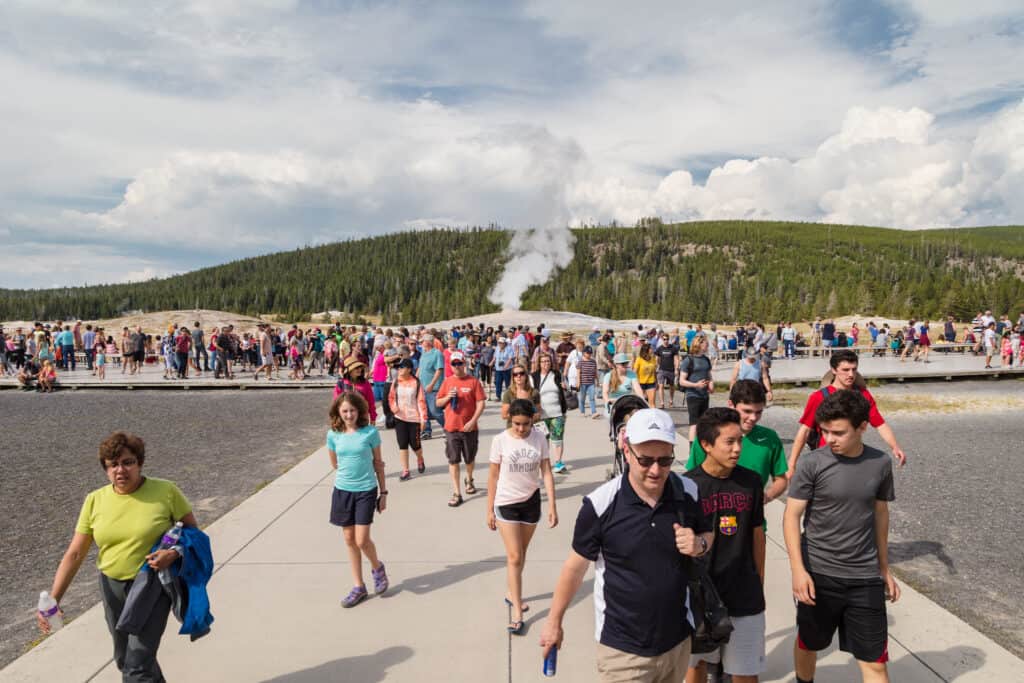
The park is open year-round, but July and August are the only months when all services, roads, and facilities like the NPS campgrounds are open. The early fall months, September through early October, is the best time to visit after the summer crowds have left and the fall colors are at their peak.
3. Great Smoky Mountains National Park
Great Smoky Mountains National Park saw over 11 million visitors last year, making it the most visited national park in the country. The Smokies have two peak seasons for visiting: the summer (June 15-August 15) when the weather is nice and warm, and during the fall, when the park is famous for its bright foliage that paints the landscape. The entire month of October can get crowded, especially on weekends and later in the day.
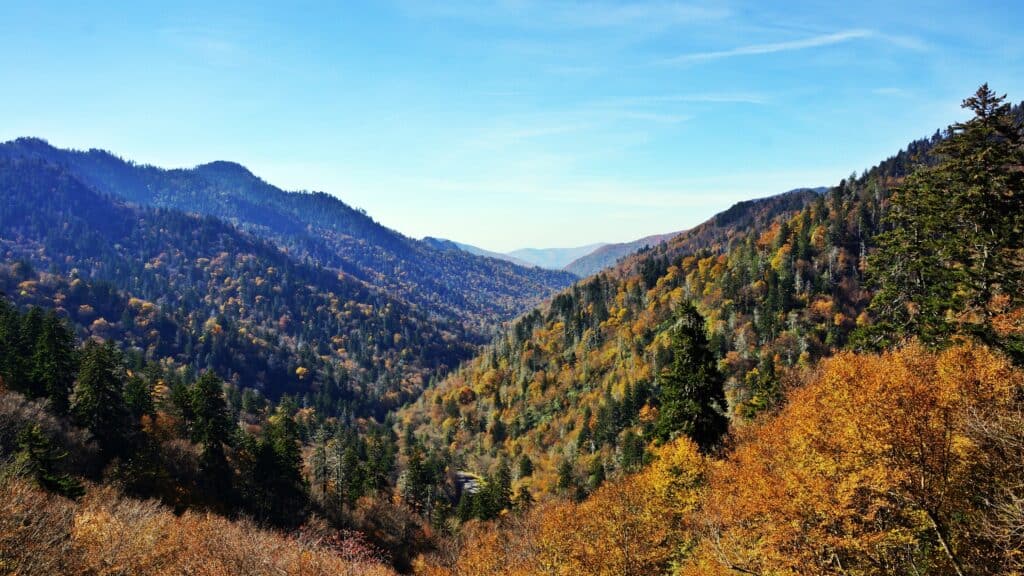
If you’re looking for more solitude, spring and winter the best time to visit the Smoky Mountains. A diverse variety of wildflowers bloom from late-March through June, and the hiking trails and picnic areas begin opening in March and April.
By winter, the crowds are gone and the scenery is a winter wonderland for hiking. A few of the campgrounds, roads, picnic areas, and trails stay open all year weather-permitting.
4. Yosemite National Park
Yosemite sees on average 4 million visitors every year, the busiest time being from June through September. Tourists come from all over the world to see the dramatic waterfalls and amazing rock formations like El Capitan and Cathedral Rocks. Campgrounds and lodging in the area is almost always booked during the peak summer season.
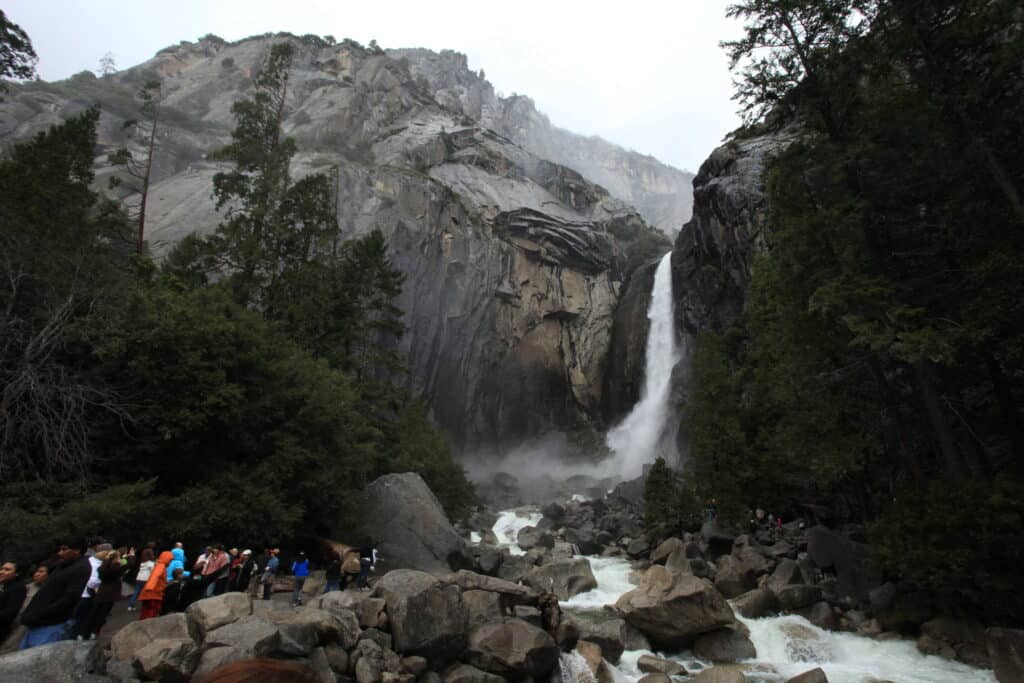
Visiting in May, once the snow has melted and the roads are open, is your best chance at avoiding crowds while getting the most of the park experience. Some hikes in Yosemite Valley, Wawona, and Hetch Hetchy are often free of snow by April, and most are usually completely snow-free by May. Some of the larger creeks and rivers, and the better-known waterfalls, tend to reach peak runoff by May or June. Wildflowers like dogwood and redbud also start to bloom this month.
5. Zion National Park
Of the 5 national parks in Utah, Zion is the most visited with over 4.3 million visitors every year. This also makes it one of the most visited national parks in the whole country. If you visit on any weekend afternoon during the summer, or on a holiday like Labor Day, you’re bound to run into crowds on the trails, parking lots, and at all of the viewpoints.
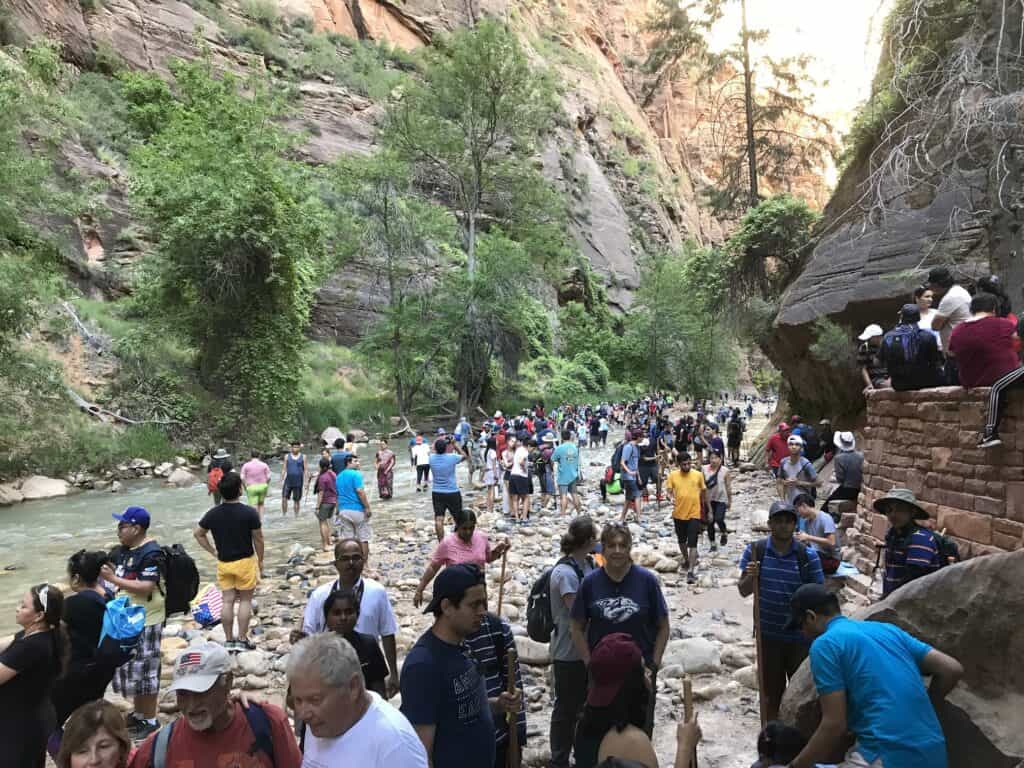
Fall is the best time to visit, once the main summer crowds have gone home, the scenery is full of colorful foliage, and before the winter storms in December. The fall weather typically offers cooler hiking temperatures and park operations like the shuttle buses are still running.
Winter in Zion will give you even more solitude, but you’ll need to be prepared for the ice and snow. The roads in the park are plowed but some trails are closed seasonally due to the hazard of falling ice.
6. Mount Rainier National Park
Mount Rainier gets about 2 million visitors every year, a large majority of these during July and August due to the weather, accessibility, and the colorful wildflowers that reach full bloom in the summer.
Visiting in May-June, or September-October, is ideal if you want more solitude, but still want to hike the trails while the weather is tolerable. The fall months bring cooler temperatures and seasonal foliage that turns the landscape into an idyllic paradise.
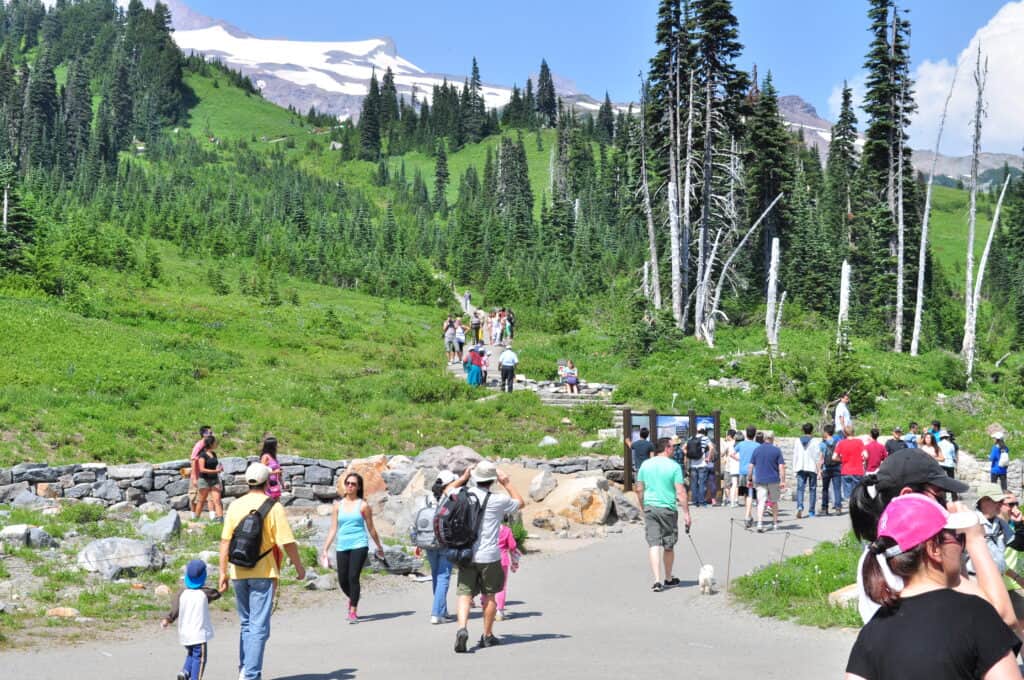
The park is open to visitors all year, but vehicle access in the winter is restricted to the Nisqually Entrance in the southwest corner of the park, and the NPS campgrounds close seasonally. By winter, there are several ways to play in the snow, including Paradise’s Snow Play Area, Crystal’s Mount Rainier Gondola, and cross-country skiing and snowshoeing on well-established trails through the forest.
7. Rocky Mountain National Park
Every year, Rocky Mountain National Park sees almost 5 million visitors, with a huge spike in visits between June and September. While the summer crowds come to hike the trails and go fishing in the Rockies, fall is another peak season when Colorado’s famous aspen trees start turning gold.
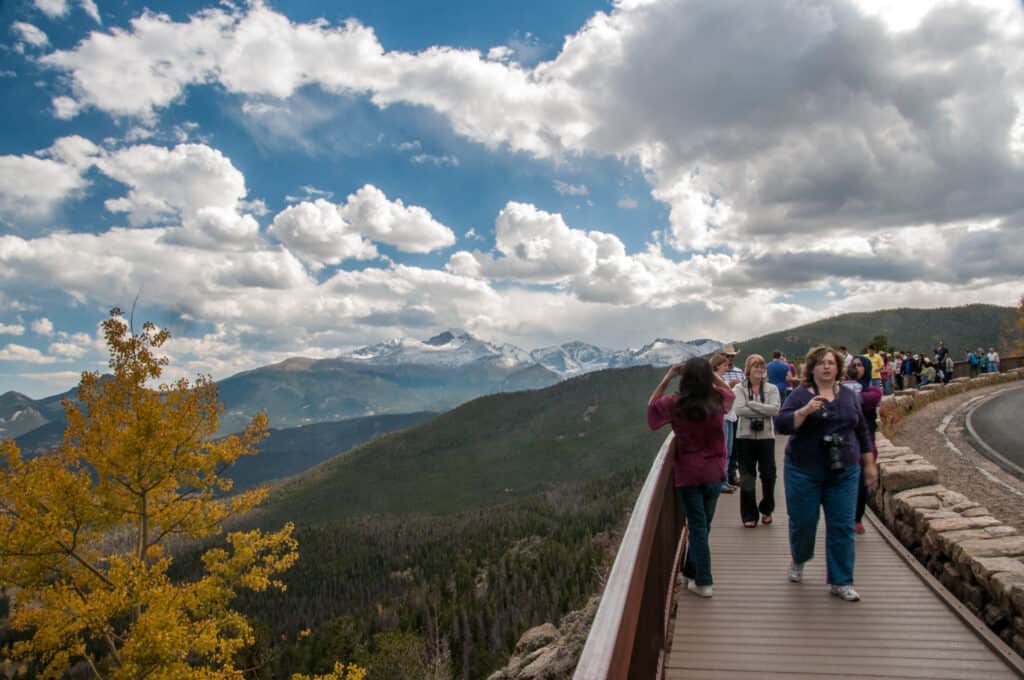
The best time to visit Rocky Mountain National Park is in late May or early June, or during the week in September after Labor Day through mid-October. These times typically have fewer crowds, pleasant weather, and the scenic Trail Ridge Road is open for the season.
8. Acadia National Park
About 3.5 million people visit Acadia National Park in Maine every year, typically from June through September. Certain areas, such as Cadillac Summit Road (especially at sunrise and sunset), Jordan Pond, and the Sand Beach parking lot are often the most congested.
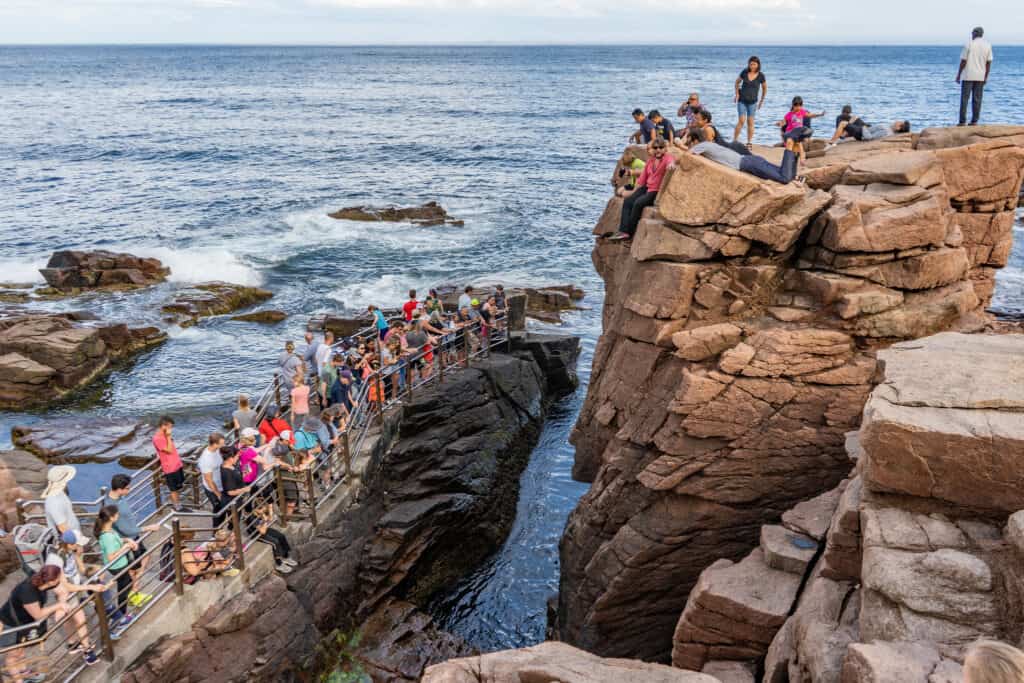
Parking in Acadia is limited and tends to fill up early every day throughout the summer. If you plan on visiting during the summer, park your RV nearby and use their free Island Explorer shuttle bus system to reach the most popular areas.
They have ten bus routes that link hotels, inns, and campgrounds with destinations in Acadia National Park and neighboring village centers. The shuttle bus usually runs from late June through October.
Late spring and fall are the best time to visit Acadia while the weather is warm. A couple weeks after Labor Day in September until mid-September is an even better window before the crowds arrive for the fall foliage.
